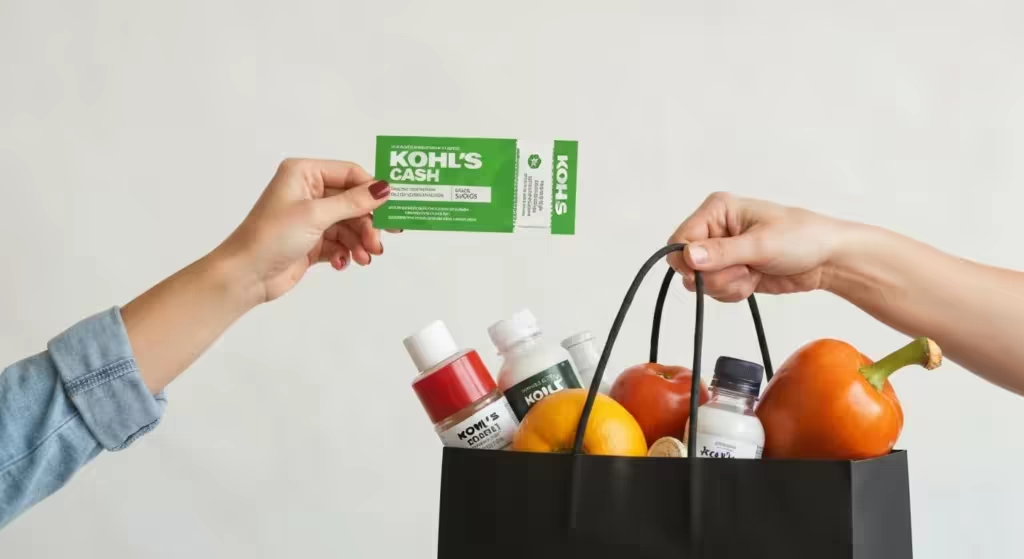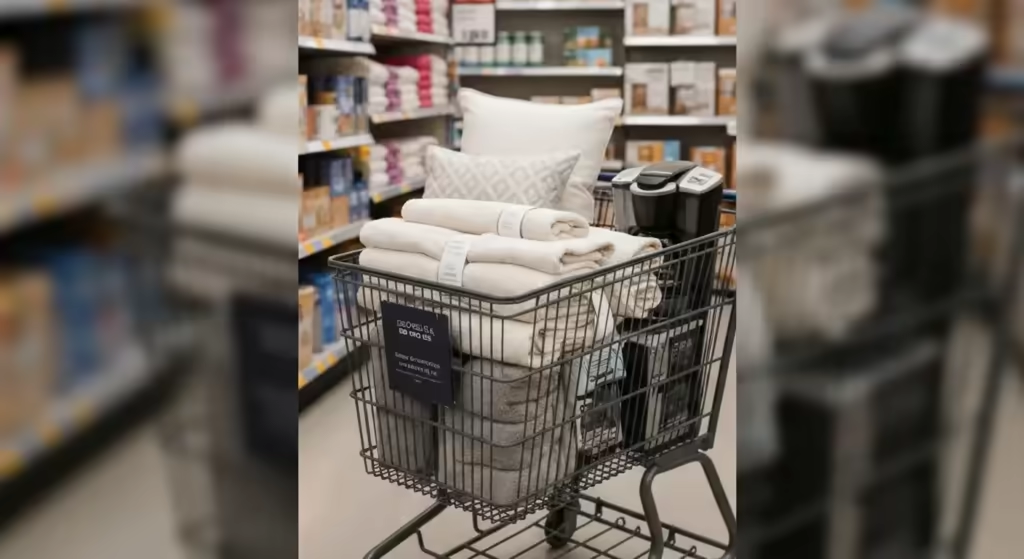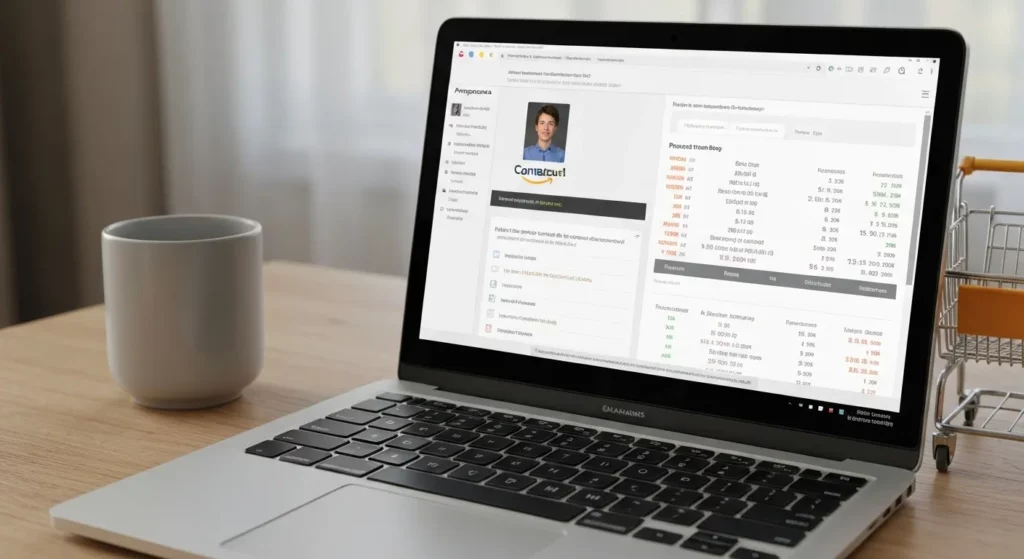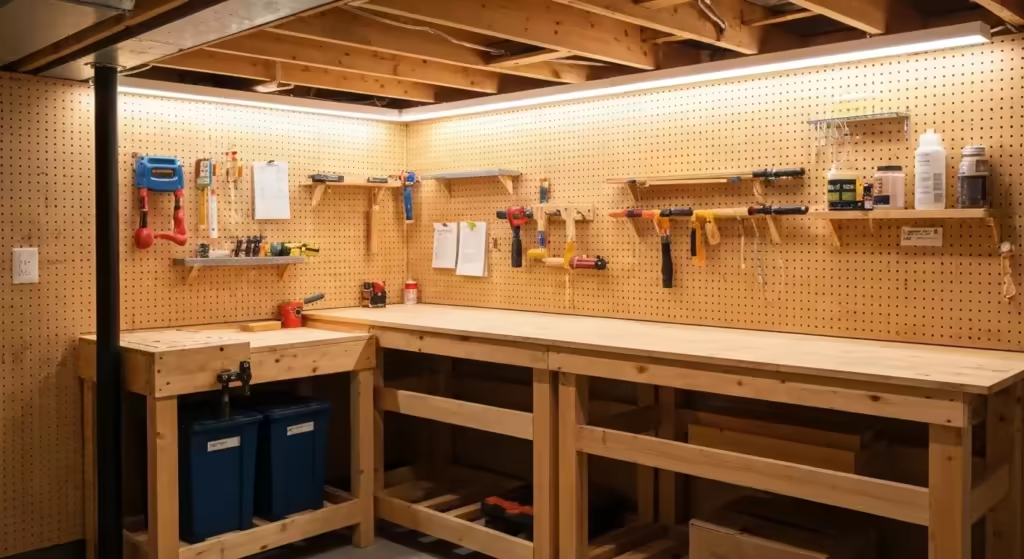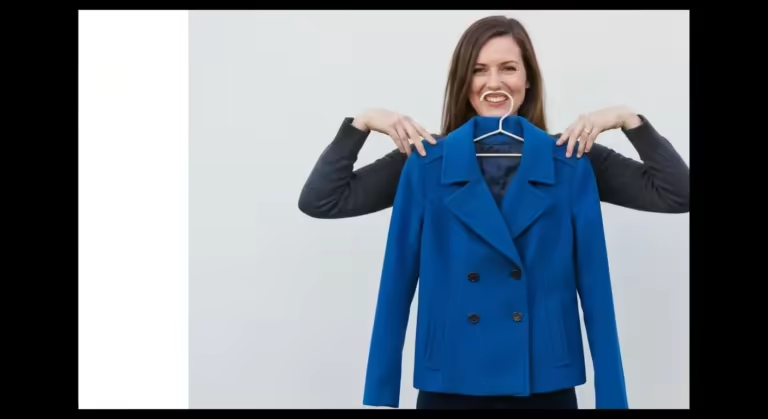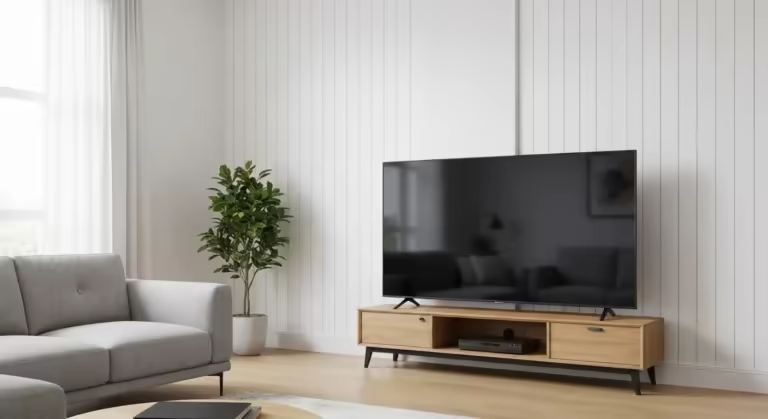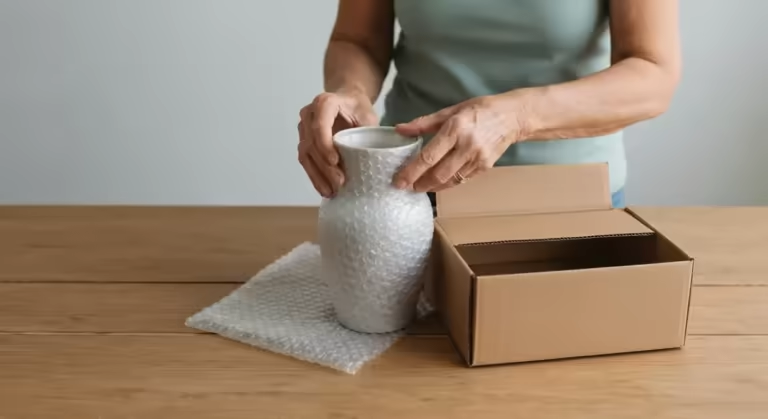It wasn’t a single, dramatic event that made me realize my finances were stuck. There was no mountain of credit card debt, no collection calls, no financial rock bottom. It was something much quieter, a slow, creeping realization that felt more like a leaky faucet than a burst pipe. Drip, drip, drip. Another small, unplanned purchase. Another month where my savings account looked almost identical to the month before. Another dream deferred.
I’ve always been what you might call a “responsible” person. I paid my bills on time, I had a decent nest egg, and I lived within my means. But I was treading water. My big-picture goals—like a major kitchen remodel I’d been dreaming about for years and a trip to see the northern lights—felt perpetually on the horizon, like a destination I was always walking toward but never reaching.
The frustration peaked one Tuesday afternoon. I was balancing my checkbook, a ritual I’d performed for decades, and the numbers just stared back at me, stubbornly unimpressive. I had worked hard my entire life, yet the gap between my reality and my aspirations felt vast. The culprit, I knew, wasn’t big, reckless spending. It was the little things. The $20 for a new kitchen gadget I saw on a talk show, the $40 for a sweater on sale that was “too good to pass up,” the $15 for a book I could have gotten from the library.
Each purchase was small enough to justify in the moment, but together, they formed a powerful current pulling my financial progress out to sea. I felt a pang of despair mixed with determination. Something had to change. I needed more than just a budget; I needed a new relationship with my money. I needed a system built for me, not for some hypothetical, perfectly disciplined person I clearly wasn’t. And oddly enough, the answer I was looking for started to reveal itself in the very place my money seemed to disappear: the aisles of a store.
The Familiar Failures: Why Traditional Budgeting Didn’t Work for Me
Before I landed on the formula that finally clicked, I tried just about every popular budgeting method out there. I approached each one with the optimism of a New Year’s resolution, and each one ended with the quiet fizzle of disappointment.
First, I tried the classic envelope system. It sounded so simple, so tangible. I went to the bank, withdrew cash for the month, and dutifully labeled a series of envelopes: “Groceries,” “Gas,” “Entertainment,” “Personal Spending.” For the first week, I felt incredibly virtuous. I’d open my “Groceries” envelope at the checkout, handing over crisp bills. It felt real and immediate.
But the system started to fray around the edges almost immediately. What happened when I wanted to buy something online? Or when my “Entertainment” envelope was empty, but a friend called with a last-minute invitation to a concert? I found myself “borrowing” from other envelopes, promising to pay them back, creating a confusing mess of IOUs with myself. It was cumbersome and, in a world of digital transactions, felt anachronistic and impractical for my life. The cash-only rule felt less like a discipline and more like a hindrance.
Next, I dove into the world of budgeting apps and spreadsheets. I am comfortable with technology, so I thought this would be the answer. I downloaded a popular app that promised to track every penny. I spent hours linking my bank accounts, categorizing past transactions, and setting up spending limits.
The initial data was fascinating, and a little horrifying. Seeing my “Miscellaneous Shopping” category in a stark, colorful pie chart was a wake-up call. But the maintenance was exhausting. The app would miscategorize a purchase at a big-box store, and I’d have to go in and manually fix it. Every day, it felt like I had financial homework to do. Instead of feeling empowered, I felt micromanaged by my own phone. It turned my finances into a chore I started to dread. After a few weeks of diligent tracking, I began to ignore the notifications. Soon, the app was just another icon I never clicked.
Then I tried the “no-spend challenge.” For a whole month, I vowed to only spend money on absolute necessities: mortgage, utilities, gas, and basic groceries. The first few days were a breeze. I felt powerful, in control. But then life happened. My nephew’s birthday came up. My favorite shampoo ran out. A tire on my car developed a slow leak.
Each necessary but “un-budgeted” expense felt like a failure. The challenge was too rigid, too all-or-nothing. It didn’t allow for the natural, unpredictable rhythm of life. Instead of teaching me to be mindful, it made me feel deprived and, frankly, a little miserable. The moment the challenge month was over, I felt like a coiled spring, and my spending bounced back with a vengeance, completely undoing any progress I had made.
My core problem was this: all of these systems were based on restriction and denial. They framed saving money as a punishment for spending it. For me, a person who genuinely enjoys the hunt for a good deal and the satisfaction of finding the perfect item, this approach was doomed from the start. It worked against my personality, not with it. I needed to find a way to make saving as satisfying as spending, to turn the act of resisting a purchase into its own reward.
My “Aha!” Moment: How Shopping Taught Me to Save
The breakthrough came on a perfectly ordinary Saturday. I was doing something I often did to decompress: wandering through a HomeGoods store. I wasn’t there to buy anything specific; I just enjoyed the “treasure hunt” aspect of it. The possibility of finding a unique piece of decor or a high-end kitchen item at a deep discount was a thrill.
That day, I found it. A beautiful, oversized ceramic vase in a deep cerulean blue. It was stunning. I could picture it perfectly on my entryway table, filled with fresh flowers. I picked it up. The tag had the “Compare At” price of $120. The store’s price was $39.99. My mind immediately went into its usual justification mode. What a deal! I’m basically saving $80! It would be irresponsible *not* to buy it.
I carried it around the store for a solid fifteen minutes, my internal debate raging. I thought about my leaky faucet of spending. I thought about my stagnant savings account. I thought about the kitchen remodel that felt like a fantasy.
And then, a different thought bubbled up, clear and sharp. The thrill I was feeling wasn’t just about owning the vase. A huge part of the excitement was the deal. The “win” of finding a $120 item for $40. My brain was getting a rush from the perceived savings.
What if, I wondered, I could capture that rush without actually spending the money?
What if the real win wasn’t buying the vase for $40, but not buying it and putting that $40 directly into my savings account? I could get the satisfaction of “finding” the $40 and then actually, tangibly keep it for my real goals.
It was like a lightbulb switched on right there in the middle of the dinnerware aisle. I didn’t need to stop shopping. I didn’t need to stop enjoying the hunt. I just needed to change the final step of the game. The goal wasn’t to bring the item home; the goal was to bring the money home.
I took out my phone, snapped a quick picture of the vase and its price tag, and put it back on the shelf. I walked out of the store empty-handed, but for the first time, I didn’t feel deprived. I felt powerful. I felt like I had discovered a secret. When I got home, the very first thing I did was open my banking app and transfer exactly $39.99 from my checking account to my savings account, and in the memo line, I typed “Blue Vase.”
Looking at that transaction, I felt a jolt of satisfaction that was deeper and more lasting than the temporary high of the purchase would have been. I hadn’t just avoided spending; I had actively, intentionally saved. This was the seed of my new system. A system that didn’t fight my nature, but redirected it. This was the beginning of my very own budgeting formula.
Breaking Down My Personal Budgeting Formula
My newfound “Blue Vase” strategy was exciting, but I knew it couldn’t be my entire financial plan. It was the fun part, the twist, but I needed a solid foundation to build upon. I realized my system needed two distinct parts: a consistent, automatic baseline for saving, and my new, gamified method for capturing “found” money. This two-pronged approach became my personal formula for finally making progress.
Part 1: How to Set Weekly Savings Goals You Can Actually Stick To
First things first, I needed a safety net. My previous attempts at saving were erratic because they were based on whatever was “left over” at the end of the month—which was often very little. I needed to pay myself first, but in a way that felt realistic and not suffocating.
I sat down and created a very simple, no-frills calculation to determine my weekly savings goal. This wasn’t about complex percentages or tracking a hundred categories. It was about clarity and consistency.
Step 1: Calculate My Fixed Costs. I listed all the expenses that were the same every single month. For me, this included my mortgage, property taxes (I set aside 1/12th each month), insurance, and streaming subscriptions. This gave me a solid, predictable number.
Step 2: Estimate My Essential Flexible Spending. This was the key. These are the costs that are necessary but can fluctuate, like groceries, gas for the car, and utilities. I didn’t aim for an impossibly low number. I looked back at the last three months of my statements to find a realistic average. I gave myself a reasonable budget for groceries that didn’t mean eating ramen for a week. The goal here was honesty, not extreme austerity.
Step 3: The Simple Savings Calculation. I took my monthly income and subtracted my fixed costs and my estimated essential flexible spending. This left me with my “discretionary” income. It was the money I had previously frittered away on the little things.
My formula was this: (Monthly Income – Fixed Costs – Essential Flexible Spending) = Discretionary Income.
Then, I committed to saving a specific, non-negotiable portion of that discretionary amount. I started small. I decided to automatically save 25% of that number. It was a percentage that felt significant enough to make a difference but left me with enough breathing room so I didn’t feel constricted.
So, if my discretionary income was, say, $800 a month, my baseline savings goal was $200. I divided that by four and set up an automatic transfer of $50 every single Friday from my checking to my savings account. Every. Single. Friday. No excuses. This was my financial bedrock. It was my guaranteed progress, happening in the background without any daily effort from me. This single action provided a profound sense of security and momentum.
Part 2: The Shopping Twist — My Trackable Shopping Savings System
This is where the magic happened. The automatic $50 a week was my defense, but the “Shopping Twist” was my offense. This was the active, engaging part of the plan that turned saving from a passive activity into an exciting game. I called it my trackable shopping savings system, and it was built on the lesson of the blue vase.
Here’s exactly how it works:
- The Urge: The process starts whenever I’m out and about and feel the impulse to buy a non-essential item. It could be a new throw pillow, a bestselling novel, a fancy olive oil, anything that isn’t on my pre-planned list.
- The Pause and a Picture: Instead of immediately putting the item in my cart, I stop. I take a moment and ask myself one simple question: “Is this item more important than my kitchen remodel?” Sometimes the answer is yes, and that’s okay! But most of the time, it’s a resounding no. I then take out my phone and snap a picture of the item and its price tag. This act of documentation feels deliberate and helps me detach emotionally from the purchase.
- The “Virtual Purchase”: I walk away. I leave the store without the item. When I get home, or even right there in the car, I perform the most crucial step. I open my banking app.
- The Immediate Transfer: I transfer the exact amount I would have spent on that item from my checking account to my high-yield savings account. If that sweater was on sale for $29.99, then $29.99 gets moved over. I label the transfer with the name of the item I resisted, like “Gray Sweater” or “Cookbook.”
- The Logbook: This is the part that provides the long-term motivation. I keep a simple journal—a physical notebook, not a spreadsheet, because I enjoy the tangible act of writing it down. In it, I have four columns:
- Date: The day I “saved.”
- Item: A brief description (e.g., “Blue Vase”).
- Price (What I Would Have Paid): This is the amount I transferred ($39.99).
- Running Total: I add the new amount to the previous total, so I can see my “Shopping Challenge” savings grow over time.
This system did something brilliant for my brain. It didn’t just prevent a debit from my checking account; it created a corresponding credit in my savings account. The act of saying “no” was no longer a moment of lack. It was a moment of gain. I was actively earning money for my goals by “outsmarting” my own impulses. The logbook became a trophy case of my good decisions, and watching that running total climb was more satisfying than any closet full of unworn sale sweaters.
My Trackable Shopping Savings System in Action: Stories from the Field
A formula is just a theory until you put it to the test. The real proof of my new system wasn’t in the planning, but in the day-to-day practice. It became a quiet, personal game I played with myself, filled with small victories that added up to a monumental change.
I remember one of the first big tests vividly. About a month into my new system, I was at a bookstore, my happy place. A beautiful, hefty coffee table book about Italian architecture caught my eye. It was magnificent. The photographs were stunning, the paper was thick and glossy, and it was on sale for $55, down from its original price of $90. My old self would have snapped it up in a heartbeat, convincing myself it was an “investment in culture.”
I held the book, feeling its weight. I could almost feel the satisfaction of placing it on my coffee table. But then I pictured my kitchen. The cracked laminate countertops, the peeling cabinet doors. I thought about the sleek, new granite I’d priced out. I asked myself the question: “Is this book more important than my kitchen?”
The answer was clear. I pulled out my phone, took a picture of the book’s cover and its sale sticker, and carefully placed it back on the display. My heart felt a little pang of longing, I won’t lie. But as I walked to my car, a different feeling began to take over: resolve. I sat in the driver’s seat, opened my bank app, and transferred $55.00 to my savings. Memo: “Italian Architecture Book.”
Later that evening, I opened my savings logbook. I wrote down the date, the item, and the $55. My previous total from smaller saves was $112. I drew a line and wrote the new total: $167. Looking at that number, I felt a surge of pride that completely eclipsed the momentary desire for the book. I had converted a fleeting want into a permanent, tangible step toward my dream.
This became my new habit. A set of garden tools for $25? Click. Transfer. Logged. A fancy new blender for $89? Click. Transfer. Logged. My saving money with shopping challenges logbook started to fill up. Page after page of resisted temptations, each one representing a conscious choice to prioritize my future joy over instant gratification.
Of course, it wasn’t a perfect system, because I’m not a perfect person. There were times I bought the thing. I remember seeing a gorgeous cashmere scarf, incredibly soft, in the perfect shade of green. It was an impulse buy, and I gave in. I bought it, and for a moment, I felt that familiar twinge of guilt. I had broken my own rule.
But here’s what was different: I didn’t let it derail me. My old self would have seen this as a total failure and abandoned the whole budget. My new self, armed with my formula, saw it differently. I went home and enjoyed my new scarf. I didn’t “punish” myself. But I also didn’t log a “save.” I simply acknowledged the choice I made and committed to getting back on track with the next decision. My system was flexible enough to absorb the occasional human moment. It was about progress, not perfection.
The most surprising part of this journey was how it changed my perception of shopping. I still enjoyed it, but the purpose shifted. Sometimes I would go to a store with no intention of buying anything, purely to “hunt” for savings to add to my account. I’d find a great deal on a jacket, snap a photo, and feel the thrill of transferring that $70 to my savings. The store became my savings hunting ground. The game wasn’t “what can I acquire?” but “what can I convert to savings?” It was a profound mental shift that put me firmly in the driver’s seat of my financial life.
The Resolution: A New Kitchen and a Clearer View
The first year of using my two-part formula flew by. My automatic weekly transfer of $50 had steadily built up a foundation of $2,600. That alone was more than I had managed to save in the previous two years combined. But the real shock came when I tallied up my “Shopping Challenge” logbook.
I sat down with my notebook and a calculator. Page after page, I added up the amounts: $39.99 for the blue vase, $55 for the architecture book, $25 for the garden tools, and dozens of other entries, big and small. The final number stunned me into silence. I had saved an additional $3,450. That was money that, without a doubt, would have vanished into thin air, spent on things I now couldn’t even remember wanting.
In one year, I had socked away over $6,000. It wasn’t just a number on a screen; it was tangible proof that a small, consistent change in habits could yield extraordinary results. My kitchen remodel was no longer a distant dream. It was a real, achievable project. Six months later, I was standing in my brand-new kitchen, running my hand over the cool, smooth surface of the granite countertop I had once only dreamed of. The feeling was indescribable. It wasn’t just happiness about the new kitchen; it was a deep, profound pride in knowing that I had built it myself, one resisted temptation at a time.
But the most significant changes weren’t in my home or my bank account. They were in me. My journey taught me several invaluable lessons that I carry with me to this day.
First, I learned that the most effective financial system is one you design for yourself. There is no one-size-fits-all solution. The reason my formula worked where others failed is that it was tailored to my personality. It embraced my love for the “hunt” of shopping and channeled it into a productive outcome. It didn’t ask me to be someone I’m not; it helped me become a better version of myself. If you’re struggling, don’t be afraid to throw out the rulebook and invent your own game.
Second, I discovered the immense power of reframing. By changing my perspective, I turned an act of denial (not buying something) into an act of empowerment (actively saving that money). This mental shift was everything. Saving was no longer about what I was giving up; it was about what I was gaining. It became a choice for my future self over my present-moment impulse.
Third, I realized the importance of visible, trackable progress. My simple logbook was my most powerful tool. Seeing that savings total grow with each entry was a constant source of motivation. It made my goal feel closer with every line I wrote. Whether it’s an app, a spreadsheet, or a spiral notebook, find a way to make your progress tangible. Celebrate the small wins along the way; they are the fuel that will get you to the finish line.
Finally, I learned the grace of self-compassion. My journey wasn’t a straight line to success. There were missteps and impulse buys. By allowing myself the occasional “offense” without shame or guilt, I created a sustainable practice. Perfection is the enemy of progress. The goal isn’t to never make a mistake; it’s to have a system strong enough to get you back on track when you do.
Today, my finances feel completely different. They aren’t a source of anxiety or frustration, but a tool I can use to build the life I want. The leaky faucet has been fixed. I’m still saving for my trip to see the northern lights, but now it feels like an inevitability, not a fantasy. And I still love to wander the aisles of a store. But now, when I walk out empty-handed, I do it with a smile, knowing I just won the game.





